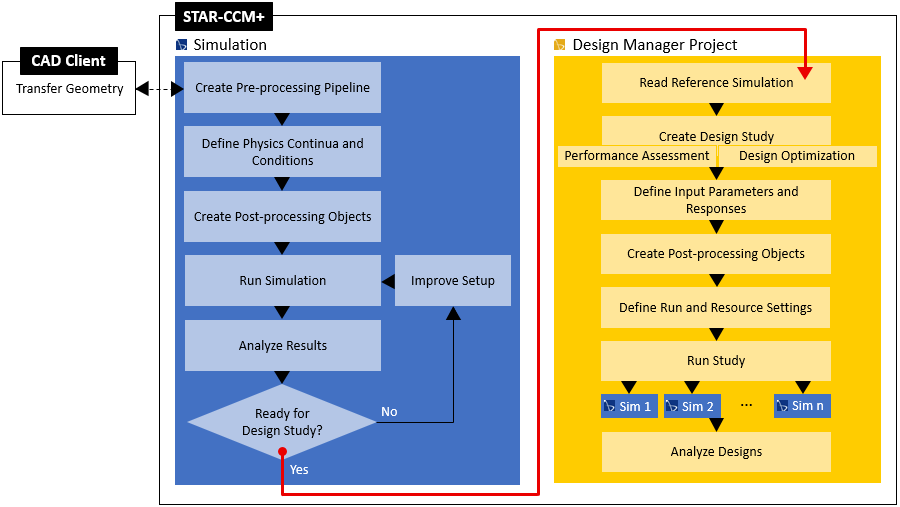General Simulation Process
Simcenter STAR-CCM+ provides you with a simulation tool that allows you to test solution designs under virtual conditions. Although Simcenter STAR-CCM+ supports a wide range of modeling scenarios, there is a general workflow that you can follow in most situations.
- Geometry-level objects. Geometry-level objects describe the spatial construction of the design you are testing. The main geometry objects are geometry parts, part surfaces, part curves, and part contacts. These objects reside beneath the Geometry node in the Simcenter STAR-CCM+ interface.
- Region-level objects. These objects support the physics, initial conditions, boundary conditions, and other sources that you apply to the materials under test. The main region-level objects are regions, boundaries, and interfaces. These objects reside beneath the Regions and Interfaces nodes.
- Physics-model objects. Physics-model objects are defined within physics continua. A physics continuum represents a material, which can be multi-component or multiphase, and the physics models that act on that material.
In general practice, you create and order the geometry objects before mapping them to corresponding objects within the region hierarchy. However, in order to prepare an appropriate arrangement of geometry objects, you must first plan the arrangement of region objects. Although Simcenter STAR-CCM+ supports a wide range of possible arrangements, there are some broad categories that you can consider in making an initial plan.
General Workflow
Simcenter STAR-CCM+ applies physics models to fluid and solid materials that belong to physics continua. A physics continuum is an object in the Simcenter STAR-CCM+ simulation hierarchy that connects fluid or solid materials to the models that govern their behavior. Physics continua in turn apply to regions
The most general view of the
Simcenter STAR-CCM+ workflow is depicted in the illustration below.
